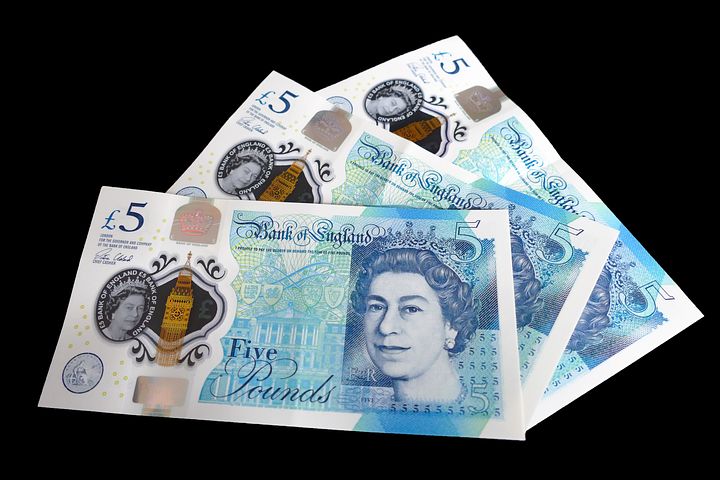The Bank of England has increased its virus crisis support by £150bn – warning that the return to lockdown will cause fresh economic damage.
The Bank of England’s Monetary Policy Committee (MPC) sets monetary policy to meet the 2% inflation target, and in a way that helps to sustain growth and employment. In that context, its challenge at present is to respond to the economic and financial impact of the Covid pandemic. At its meeting ending on 4 November 2020, the MPC voted unanimously to maintain Bank Rate at 0.1%. The Committee voted unanimously for the Bank of England to maintain the stock of sterling non-financial investment-grade corporate bond purchases, financed by the issuance of central bank reserves, at £20 billion. The Committee voted unanimously for the Bank of England to continue with the existing programme of £100 billion of UK government bond purchases, financed by the issuance of central bank reserves, and also for the Bank of England to increase the target stock of purchased UK government bonds by an additional £150 billion, financed by the issuance of central bank reserves, to take the total stock of government bond purchases to £875 billion.
Since the Committee’s previous meeting, there has been a rapid rise in rates of Covid infection. The UK Government and devolved administrations have responded by increasing the severity of Covid restrictions. All restrictions announced up to and including 31 October have been reflected in the Committee’s judgements.
There are signs that consumer spending has softened across a range of high-frequency indicators, while investment intentions have remained weak. The Committee’s latest projections for activity and inflation are set out in the accompanying November Monetary Policy Report. These assume that developments related to Covid will weigh on near-term spending to a greater extent than projected in the August Report, leading to a decline in GDP in 2020 Q4.
Household spending and GDP are expected to pick up in 2021 Q1, as restrictions loosen. The level of activity in the first quarter is expected to remain materially lower than in 2019 Q4. UK trade and GDP are also likely to be affected during an initial period of adjustment, over the first half of next year, as the United Kingdom leaves the Single Market and Customs Union on 1 January and is assumed to move immediately to a free trade agreement with the European Union.
Over the remainder of the forecast period, GDP is projected to recover further as the direct impact of Covid on the economy is assumed to wane. Activity is also supported by the substantial fiscal policies already announced and accommodative monetary policy. The recovery takes time, however, and the risks around the GDP projection are judged to be skewed to the downside.
The fall in activity over 2020 has reflected a decline in both demand and supply. Overall, there is judged to be a material amount of spare capacity in the economy. The LFS unemployment rate rose to 4.5% in the three months to August, but it is likely that labour market slack has increased by more than implied by this measure. The extended Coronavirus Job Retention Scheme and new Job Support Scheme will mitigate significantly the impact of weaker economic activity on the labour market. The unemployment rate is expected to peak at around 7¾% in 2021 Q2. Beyond that point, spare capacity is expected to be eroded as activity picks up, and a small degree of excess demand emerges over the second half of the forecast period.
Twelve-month CPI inflation increased to 0.5% in September, but remained well below the MPC’s 2% target, largely reflecting the direct and indirect effects of Covid on the economy. These include the temporary impact of lower energy prices and the reduction in VAT, as well as some downward pressure from spare capacity. CPI inflation is expected to remain at, or just above, ½% during most of the winter, before rising quite sharply towards the target as the effects of lower energy prices and VAT dissipate. In the central projection, conditioned on prevailing asset prices, inflation is projected to be 2% in two years’ time.
The outlook for the economy remains unusually uncertain. It depends on the evolution of the pandemic and measures taken to protect public health, as well as the nature of, and transition to, the new trading arrangements between the European Union and the United Kingdom. It also depends on the responses of households, businesses and financial markets to these developments.
At this meeting, the MPC judges that a further easing of monetary policy is warranted. The Committee agreed to increase the target stock of purchased UK government bonds by an additional £150 billion in order to meet the inflation target in the medium term, taking the total stock of government bond purchases to £875 billion. The Committee will keep the asset purchase programme under review.
The MPC will continue to monitor the situation closely. If the outlook for inflation weakens, the Committee stands ready to take whatever additional action is necessary to achieve its remit. The Committee does not intend to tighten monetary policy at least until there is clear evidence that significant progress is being made in eliminating spare capacity and achieving the 2% inflation target sustainably.




